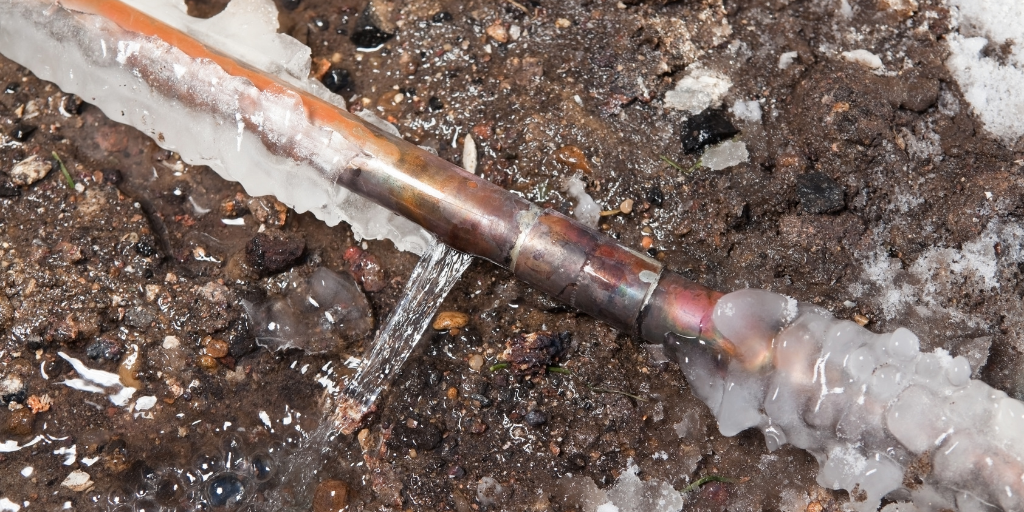Broken pipes, among other winter hazards, can lead to significant property damage. Are you prepared?
Winter weather conditions have arrived, and with them come serious risks to your property. It’s important to develop written procedures for winter weather inspections, ensuring that those involved know their role in keeping your house of worship safe from seasonal damage.
During inspections, it’s critical that you have detailed instructions about each risk (e.g. heater failure, broken pipe), including actions to take if damage or potential damage is discovered. This should include a list of contractors to contact in these events.
Consider focusing on the following five areas during your preparation/prevention inspections:
- Building structures
During the winter months, your house of worship’s property is vulnerable to structural damage, such as roof damage/collapse or flooding. Add the following to your inspection checklist to help make sure you properly maintain your structures:
- Inspect and repair all roof structures and roofing systems to ensure satisfactory condition (as necessary)
- Determine if your roof(s) is/are able to withstand heavy snow
- Check sump pumps for proper operation to prevent below-grade flooding
- Check windows at the end of each day, and send communications to staff to ensure windows are closed tightly when severe cold weather is forecasted
- Sprinkler systems and water pipes
Like many houses of worship, yours may not have daily occupancy and may go unchecked for several days or weeks. During cold weather and under these circumstances, a pipe leak or burst may be possible.
When water-filled systems freeze, the ice can cause obstructions, impaired water flow and malfunction of systems. A freeze-up is usually first discovered as a loss of water pressure or flow. This can eventually lead to broken pipes, valves and fittings.
Protecting your sprinkler systems and pipes can best be achieved by:
- Completing pre-season preparations for your pipes
- Heating areas with non-exposed pipes to a minimum of 40 degrees Fahrenheit per NFPA 25: Standard for the Inspection, Testing, and Maintenance of Water-Based Fire Protection Systems
- Conducting periodic cold weather inspections
- Creating special action plans when cold waves are predicted
- Implementing special precautions when you are away for extended periods
- Crafting response plans when low building temperatures hit
- Verifying that all exposed pipes have been insulated properly
- Ensuring that wet sprinkler systems are heated properly (a minimum of 40 degrees Fahrenheit per NFPA 25) or equipped with anti-freeze or other suitable protections
- Making sure dry sprinkler systems are drained completely and prepared for freezing conditions
- Ensuring heat for wet pipe sprinkler systems is sufficient or approved supplemental heating is provided
- Installing an electric leak detection system on your water line and monitored electric sensors near water sources to protect against leaks caused by a frozen pipe or valve
- Backup power
Winter storms can also cause damage to surrounding structures, such as utility lines. Loss of power can be disastrous for houses of worship, as ice begins to form at 32 degrees Fahrenheit and may cause pipes to freeze.
Make sure you have reliable backup power in place so you can provide continuous power—and heat—during an outage. Also:
- Verify that auxiliary generators operate properly
- Ensure that all temporary heating devices are UL-listed and approved
- Ensure that all temporary heating devices are installed with adequate clearance from any combustible material
- Grounds maintenance
In addition to property maintenance, it’s important to keep up with grounds maintenance during the cold months. Cold temperatures can create cracks in sidewalks and parking lots, which can result in falls and potential liability claims.
Make sure to:
- Keep parking lots and sidewalks clear of snow and ice to prevent cracks and falls
- Emergency planning
It’s critical that you proactively prepare for potential emergencies. Verify that your existing emergency plan covers winter exposures.
If you’re in a remote area, make sure you have the appropriate emergency materials on hand, such as food, water, flashlights, candles and blankets.
Always monitor applicable agencies, like the Department of Transportation and the National Weather Service, to get as much advance warning as you can of adverse winter weather coming your way.
Winter weather presents serious threats to your properties. It’s critical that you are as prepared as you can be by using a checklist and covering all of the above during inspections. For more risk resources to help keep your house of worship safe, click the link below:
What are some other ways you prep for winter weather conditions? Tell us in the comments below!
DISCLAIMER
The information contained in this blog post is intended for educational purposes only and is not intended to replace expert advice in connection with the topics presented. Glatfelter specifically disclaims any liability for any act or omission by any person or entity in connection with the preparation, use or implementation of plans, principles, concepts or information contained in this publication.
Glatfelter does not make any representation or warranty, expressed or implied, with respect to the results obtained by the use, adherence or implementation of the material contained in this publication. The implementation of the plans, principles, concepts or materials contained in this publication is not a guarantee that you will achieve a certain desired result. It is strongly recommended that you consult with a professional advisor, architect or other expert prior to the implementation of plans, principles, concepts or materials contained in this publication.
This blog post may contain the content of third parties and links to third party websites. Third party content and websites are owned and operated by an independent party over which Glatfelter has no control. Glatfelter makes no representation, warranty, or guarantee as to the accuracy, completeness, timeliness or reliability of any third party content. References to third party services, processes, products, or other information does not constitute or imply any endorsement, sponsorship or recommendation by Glatfelter, unless expressly stated otherwise.
Related posts
In summer 2024, weather will be unpredictable, but these are the weather events you can expect, depending on location.
About the top 4 insurance claims houses of worship experience.
Cyberattacks on healthcare organizations have risen--so has the average cost. Read about how to help avoid being another statistic.







.png)

Submit a Comment